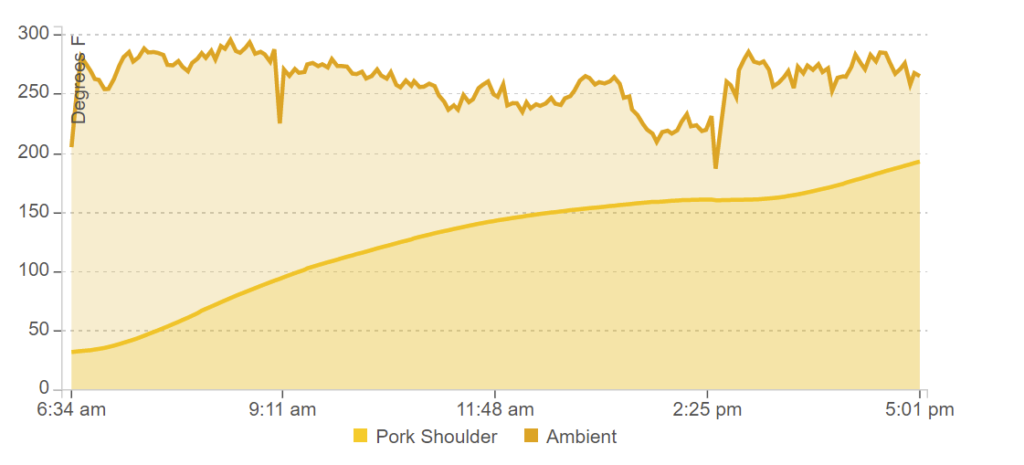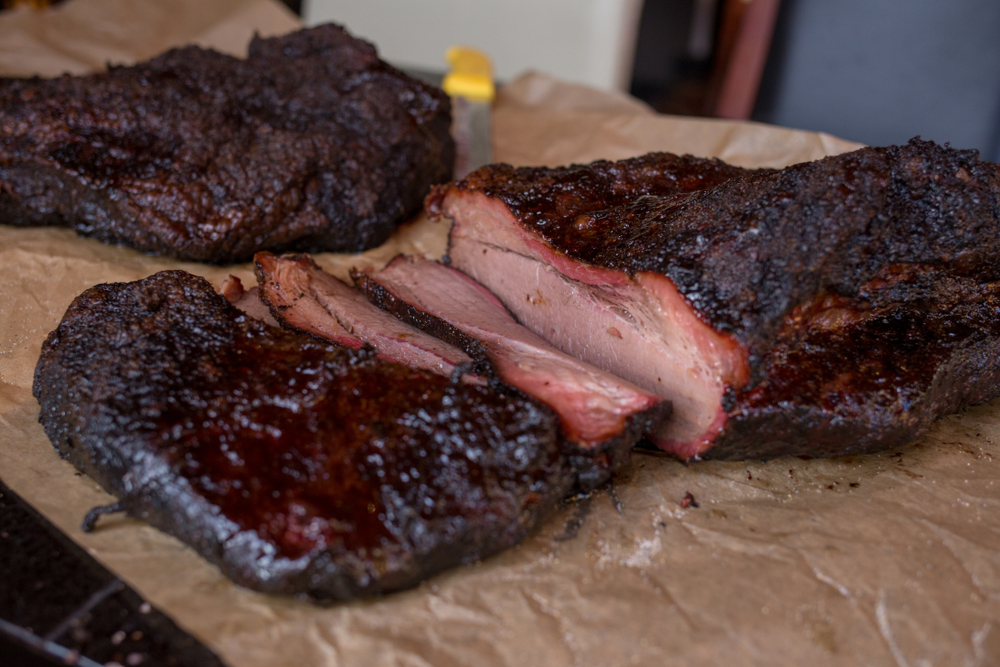What is the stall and why does brisket stall? If you’ve smoked meat for any length of time you’ve either heard of it or experienced the stall without knowing exactly how to manage it properly. So, why does brisket stall, and how to expertly manage it
The stall is when you smoke a large piece of meat like a brisket or a pork shoulder and everything is going splendidly with the internal temperature of the meat rising at a nice pace and then temperature stops rising, often for several hours. You start to wonder, “Do I have a faulty temperature probe”, “Is the smoker chamber’s ambient temperature high enough?”, or “Just what is going on and am I going to have a house full of hungry guest at dinner time?”

We have all experienced the above, especially when we were just starting out. Even experienced smokers wonder at times if the stall will ever end? With patience the stall will end and your meat will finish on time.
But what is the stall? There are a couple of primary arguments I have seen for exactly what is going on.
- The collagen is combining with the water in the meat to for gelatin
- The fats are rendering.
- The water in the meat is evaporating
On the surface, all the above points make sense, but only one is rooted in scientific fact. Yes, there is a lot of science in cooking. Without performing controlled experiments, you can observe the following. If you put a temperature probe into a piece of fat and heat it, the fat heat will slowly and steadily rise until it reaches a typical done temperature of meat.
As you heat up a piece of meat, the water in the meat pushes to the surface and evaporates. It is essentially sweating and just like your body, as you sweat the water evaporates and cools your body, or the meat in our case.
You can test this by placing a temperature probe into a soaked rag or sponge (simulating meat) and slowly heat it up. What you will find is the probe’s temperature steadily rises as we would expect until it reaches a plateau, and the temperature of the probe stays at the plateau until all the moisture in the sponge/rag is gone and then the temperature begins to slowly rise again.
This observation makes sense since meat is mostly water. But you ask, “why doesn’t the meat dry out if all the water is evaporating?” The answer is simple, the amount of water in the meat that is not chemically attached to the fats, collagens, etc. is limited. In other words, there is only a little free-floating water in the meat available to evaporate.
Now this forces us to ask the question, “Wouldn’t my moisture pan further slowdown the cooking process since it keeps the smoking chamber humid and thereby slowing the evaporative cooling?” It does slow the cooking process, but it also allows the inner temperature to heat at a closer rate to the exterior of the meat. The increased humidity in the smoking chamber also gives the smoke an additional surface to stick to and thereby enhancing the flavor profile of the meat. The moisture pans also act as a heat sink to minimize ambient temperature fluctuations during the smoking process.
So how do we beat or manage the stall?
Increase the smoking temperature
You can increase the temperature you are smoking at. This will reduce or eliminate the effect of the meat’s evaporative cooling as it shortens the stall. For example, if you roast a brisket in a 350-degree oven you will not see any stall at all, but you will lose all benefits of the low and slow cooking technique.
Increase the Humidity of the Smoking Chamber
If you can get the humidity of the smoking chamber high enough the moisture on the surface of the meat will not evaporate and the cooling process will not occur or be severely shortened. However, the bark will be soggy.
The Texas Crutch
You can also employ the Texas Crutch. For those of you not familiar with the Texas Crutch, it is a technique used by many to speed through the stall by wrapping the meat in foil or butcher paper when the meat is in the stall. The theory is that by wrapping the meat you are increasing the humidity of the exterior of the meat and preventing the moisture from evaporating and cooking the meat faster.
The tradeoff is you have a soggy bark. If you are worried about not getting as much smoke flavor with The Texas Crutch, you need not worry since the meat has already absorbed as much smoke as it is going to absorb by the time the meat hits the stall
Be Patient
The final option is to just sit though the stall and be patient. You will have a bark and great-tasting meat.
Conclusion
I do not use any techniques to push through the stall. As the water is evaporating, it is also setting up a nice bark. Only after the meat has pushed through the stall do I wrap the meat. Then I use the Texas Crutch for my brisket (butcher paper), pork shoulder (foil) and other large meats.
AmazingRibs.com has a great science-based explanation about the stall. Link
Be sure to try our Smoked Brisket and our Brisket Rub Recipe.
